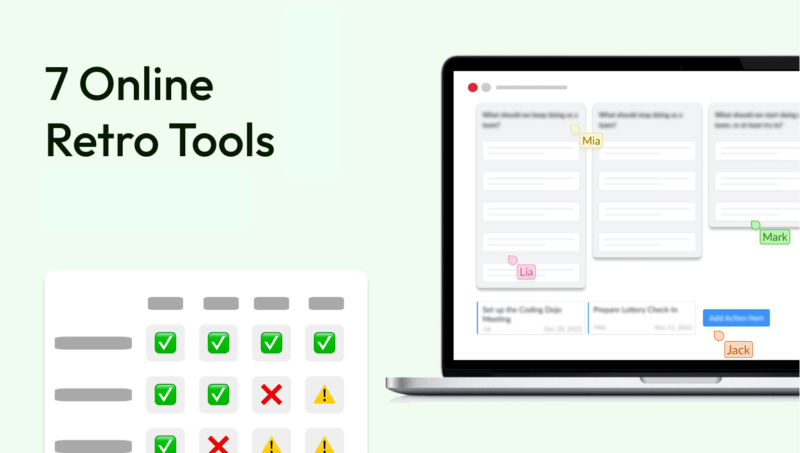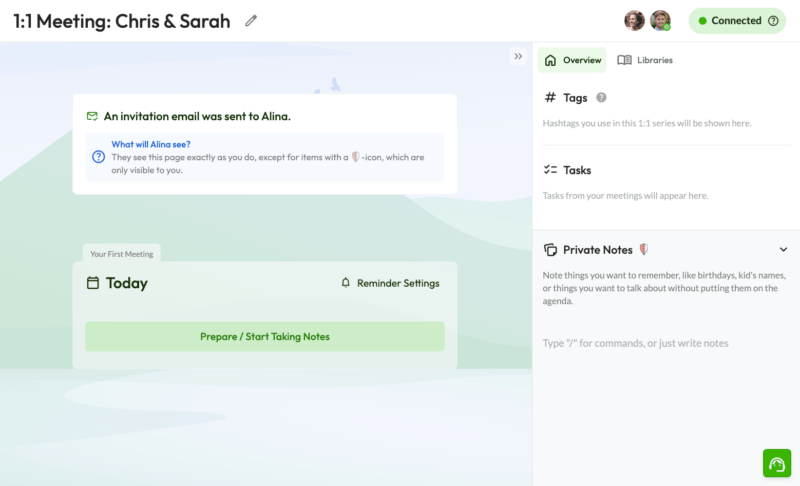In the dynamic world of product development, the product manager is at the forefront of ensuring that a product's vision is successfully realized. A critical component of this role is to communicate and collaborate effectively with development teams. The right collaboration between product managers and developers can make the difference between a successful product and one that fails to meet expectations. In this article, we explore some practical tips on the topic and address the question of what the optimal product manager to developer ratio is.
Product manager to developer ratio
The optimal product manager to developer ratio: 1 to 7
You could say that the optimal product manager to developer ratio is 1 to 7, but there is no hard and fast rule for the optimal ratio of product managers to developers, as this depends heavily on various factors, including the nature of the project, the complexity of the tasks, the company structure and culture, and the individual skills and working styles of the team members.
It is usually recommended that a Product Manager should be able to work closely with a team of developers and ensure effective communication. A general rule of thumb could be that a Product Manager should be able to supervise around 4-10 developers. Another rule of thumb is to have 7 people plus or minus 2 in a typical agile product team, which will be supervised by a product manager.
In agile environments, where iterative development cycles are often carried out, the ratio can be different than in traditional environments. It is important that the communication channels are open and efficient, regardless of the defined ratio.
It is advisable to regularly review and adjust the team composition and the number of Product Managers and Developers to ensure that the needs of the project and the organization are met. It is also important that the collaboration between Product Managers and Developers works smoothly to optimize product development.

Product manager to developer ratio
Product managers and developers: some tips
Regardless of whether you have a "real" product manager to developer relationship, there are a few things you should pay attention to in your collaboration. I have collected a few tips for you here.
Clear communication:
- Ensure that communication is clear and precise. Define clear requirements and goals for the development teams.
Understand the technology:
- Continuously educate yourself and develop an understanding of the technical aspects of development. This will facilitate communication and collaboration with the developers.
Prioritization and focus:
- Set clear priorities for the development tasks. Concentrate on those functions that offer the greatest added value for users or the company.
- Avoid excessive requirement changes during a development cycle to ensure stability.
Agile Apply methods:
- Implement agile methods such as Scrum or Kanban to increase flexibility and adaptability in product development.
- For example, hold regular stand-up meetings to discuss progress, identify obstacles and encourage collaboration.
Use feedback:
- Collect regular feedback from developers to improve collaboration and optimize processes.
- Be available for questions and discussions to avoid misunderstandings.
Empathy and teamwork:
- Show understanding for the developers' challenges and promote a culture of collaboration.
- Work to create a team feeling where everyone can share their perspectives and ideas.
Share product vision:
- Ensure that the vision and long-term goals of the product are clearly communicated. This helps to promote the understanding and motivation of the developers.
Continuous improvement:
- Implement regular retrospectives to identify and implement opportunities for improvement together with the development team. A good Scrum Master is worth their weight in gold – it is worth investing here.
This last tip brings us to the next section.

Product manager to developer ratio
A tool for ambitious agile teams
Tools can also significantly improve your collaboration, such as Echometer. Echometer is the center of your continuous improvement process and can significantly help you deliver your sprint goals on time. It was developed specifically for teams that may not have a dedicated full-time Scrum Master.
On the one hand, Echometer helps with team coaching via our retrospective tool, but also with individual coaching of engineers via our One-to-One Meeting Tool. It focuses on making any team lead of agile teams more efficient and successful with their 1:1s.
Make your 1:1 meetings exciting, measure trends, identify patterns easily and, above all, make progress in the development of your software developers! Feel free to try out one of our 1:1 templates, see below.
Interactive One-on-One Meeting template
The following one-on-one meeting template is one of many one-to-one meeting question templates in the Echometer software. If you hold regular one-to-one meetings, for example every two weeks, I can highly recommend our one-to-one meeting software. You can try out the tool by simply clicking on the button:
Hold a conversation with an icebreaker

- If you had to describe your emotional state as the weather, what is the weather like in your project or your tasks at the moment?
How is the weather in relation to your employer, your personal life and your private life?
Interactive One-on-One Meeting template
The following one-on-one meeting template is one of many one-to-one meeting question templates in the Echometer software. If you hold regular one-to-one meetings, for example every two weeks, I can highly recommend our one-to-one meeting software. You can try out the tool by simply clicking on the button:
Template part 1: Open conversation with icebreaker

- If you had to describe your emotional state as the weather, what is the weather like in your project or your tasks at the moment?
How is the weather in relation to your employer, your personal life and your private life?
Template part 2: Health check with interactive questions
- Appreciation: I receive recognition or praise for good work.
- Psychological safety: If I share that I have made a mistake, I will not be judged for it.
- Strengths: In the last few weeks I have very often been able to Strengths at work.
- Customer centricity: I know the challenges and problems of our customers. Customers.
- Feedback: I receive constructive feedback on both my work and my personal development.
Note: In this part of the appraisal interview, agreement to more in-depth Health Check items (questionnaire) is asked on a 1-7 scale.
Interactive One-on-One Meeting template
The following one-on-one meeting template is one of many one-to-one meeting question templates in the Echometer software. If you hold regular one-to-one meetings, for example every two weeks, I can highly recommend our one-to-one meeting software. You can try out the tool by simply clicking on the button:
Note: This one-on-one staff meeting template asks for agreement to the Health Check items (questionnaire) on a 1-7 scale.
- Appreciation: I receive recognition or praise for good work.
- Psychological safety: If I share that I have made a mistake, I will not be judged for it.
- Strengths: In the last few weeks I have very often been able to Strengths at work.
- Customer centricity: I know the challenges and problems of our customers. Customers.
- Feedback: I receive constructive feedback on both my work and my personal development.
"Although the product manager to developer ratio is interesting in theory, it is unlikely to play a practical role in a good team on a day-to-day basis."
Christian Heidemeyer, Psychologist & Scrum Master
Product manager to developer ratio
Conclusion - Product manager to developer ratio
Close collaboration between product managers and development teams is critical to the success of a product. By encouraging clear communication, understanding technology, setting priorities and adopting an agile mindset, product managers can create a positive and productive working environment. Continuously improving collaboration, sharing the product vision and developing a strong team culture are key aspects that should not be overlooked.
Finally, another quick hint: If you would like to know how it feels to develop your team with our tool: You can start an agile retrospective below without logging in, in this case the "Keep, Stop, Start" workshop.
Alternatively, simply forward our website to the responsible colleagues: www.echometerapp.com.







